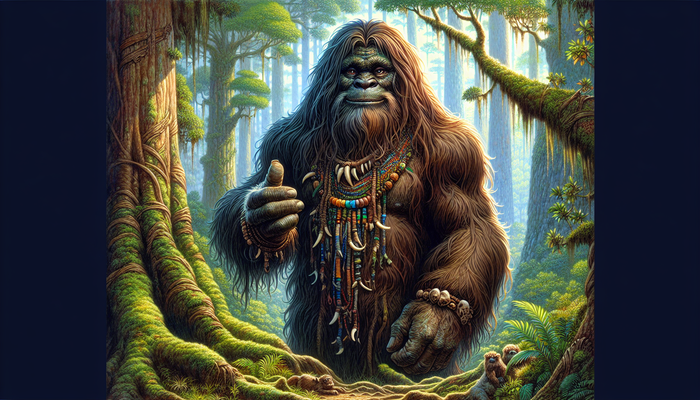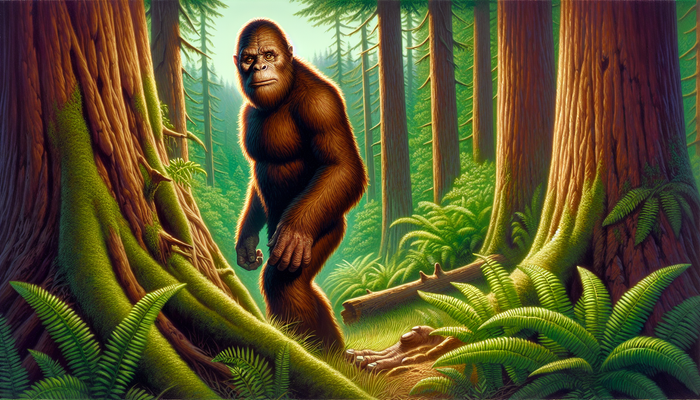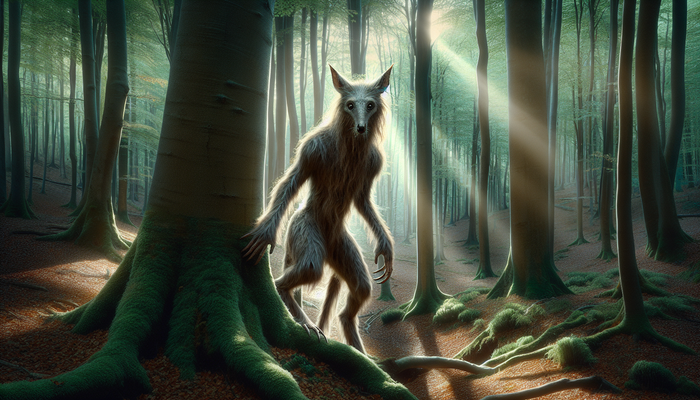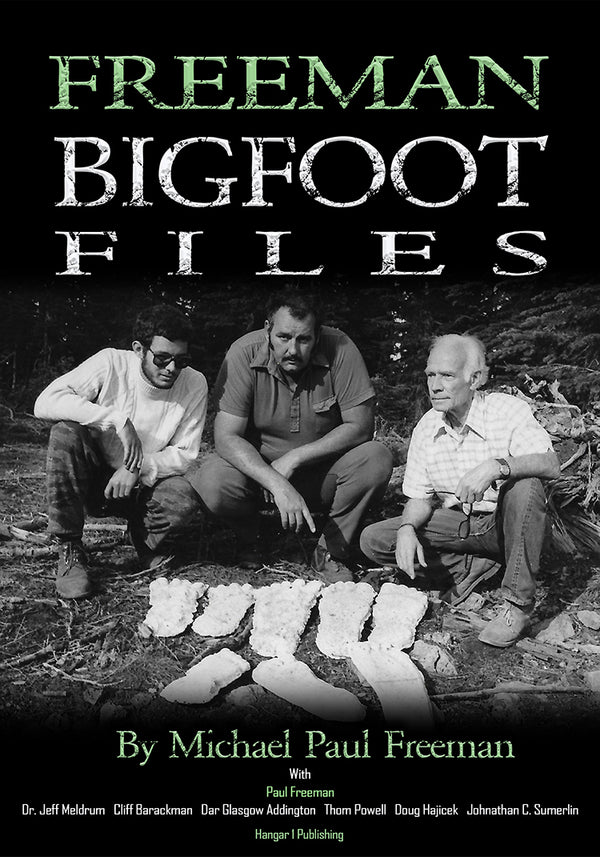Mississippi Bigfoot: A Comprehensive Look at Reported Sightings
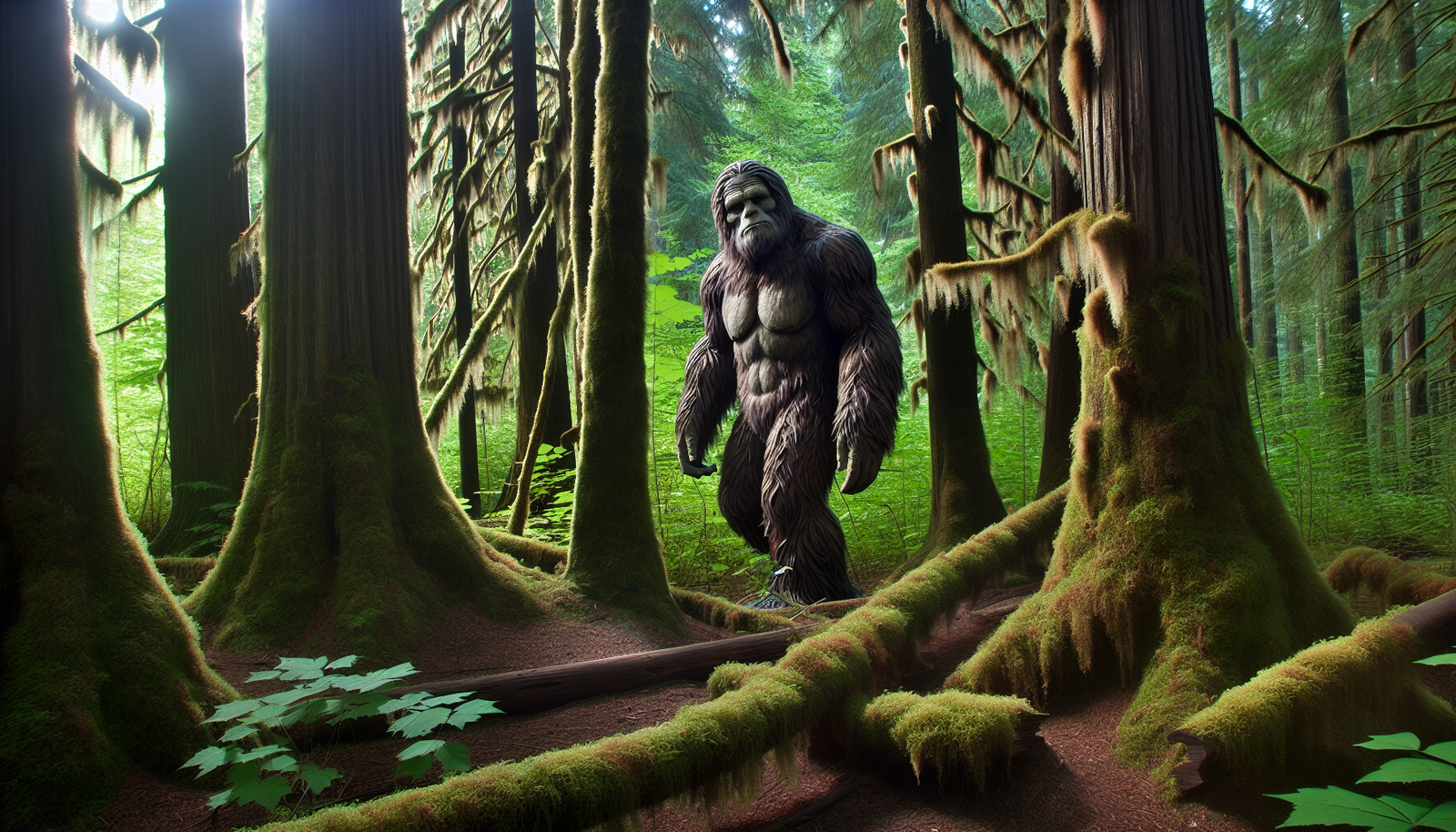
By James Roberts, Cryptozoologist
There's something about the idea of Bigfoot that captures the imagination like few other cryptids can. Perhaps it's the tantalizing possibility that, in an age where we've mapped the human genome and sent probes to the far reaches of our solar system, there could still be a massive, undiscovered primate species living right under our noses. Or maybe it's the way these legends tap into our primal fears and fascinations, evoking images of a wild, untamed wilderness where ancient mysteries still lurk in the shadows.
Whatever the reason, Bigfoot has become a cultural icon, the subject of countless books, movies, and TV shows. And while many people associate these legends with the dense forests of the Pacific Northwest, the truth is that Bigfoot sightings have been reported all across North America, from the swamps of Florida to the mountains of Canada.
But there's one state that often flies under the radar when it comes to Bigfoot activity, despite having a surprisingly rich history of sightings and encounters. That state is Mississippi, and over the course of this article, we'll be delving deep into the legends, eyewitness accounts, and cultural impact of the Magnolia State's very own Bigfoot tradition.
The Earliest Documented Bigfoot Encounter in North America: Natchez, 1721
Our journey begins nearly three centuries ago, in the year 1721, with a chilling journal entry penned by a French explorer named Pierre François-Xavier de Charlevoix. At the time, Charlevoix was staying with the Natchez Indians in what is now the city of Natchez, Mississippi. On the night of December 25th, he wrote about a terrifying encounter that had sent the entire village into a panic.
According to Charlevoix's account, the Natchez were suddenly awakened by a "great alarm" caused by a "beast of an unknown species, of an extraordinary bulk, and whose cry did not in the least resemble that of any known animal." The creature had apparently been spotted lurking on the outskirts of the village, and its mere presence was enough to strike fear into the hearts of the normally unflappable Natchez warriors.
Charlevoix himself remained skeptical, suggesting that the beast might have been nothing more than a wolf. But the Natchez were convinced that they were dealing with something far more sinister - a "monstrous beast" unlike anything they had ever encountered before.
In the centuries since Charlevoix's account was first published, it has come to be regarded as the earliest documented Bigfoot encounter in North America. And while the exact nature of the creature he described remains a mystery, there's no denying the impact that this single journal entry has had on the Bigfoot legend as a whole.
Modern Mississippi Bigfoot Sightings: A Statistical Overview
Fast forward to the present day, and Mississippi's reputation as a Bigfoot hotspot shows no signs of waning. According to data compiled by the Bigfoot Field Researchers Organization (BFRO), one of the most respected groups dedicated to investigating and documenting Bigfoot sightings, Mississippi ranks among the top 15 states in the country for reported encounters with the elusive creature.
As of 2023, the BFRO database contains over 300 reports of Bigfoot sightings in Mississippi, spanning from the Gulf Coast to the Tennessee border. These reports come from all walks of life, from hunters and hikers to farmers and suburbanites, and they describe a wide range of encounters, from fleeting glimpses of a large, hairy humanoid to extended observations of a creature going about its business in the woods.
Interestingly, the geographical distribution of these sightings is far from even. Certain areas of the state, such as the Vicksburg region and the Tunica Hills, seem to be particular hotspots for Bigfoot activity, with dozens of reports clustered in relatively small areas. This has led some researchers to speculate that these locations may be home to established Bigfoot populations, or that they may contain certain environmental factors that attract the creatures.
Of course, it's important to approach any Bigfoot sighting with a healthy dose of skepticism. Eyewitness accounts can be notoriously unreliable, and even the most sincere observer can be mistaken about what they've seen. But the sheer volume and consistency of the reports coming out of Mississippi suggest that there may be more to this legend than mere folklore or misidentification.
Notable Eyewitness Accounts
To get a better sense of what these Bigfoot encounters actually entail, let's take a closer look at some of the most compelling eyewitness accounts to come out of Mississippi in recent years.
Cheryl Mitchell's 2014 Encounter in Simpson County
One of the most striking reports comes from Cheryl Mitchell, a resident of Simpson County who had a terrifying encounter with a large, bipedal creature in the early morning hours of a winter day in 2014. According to Mitchell, she was awakened by the sound of her horses making a commotion outside. When she looked out the window, she saw a massive, dark figure, estimated to be over 8 feet tall, stepping over her fence and disappearing into the woods.
What makes Mitchell's account particularly compelling is the level of detail she was able to provide about the creature's appearance and behavior. She described it as having a lumbering, heavy gait, and noted that it seemed to step over the fence effortlessly, without breaking stride - a feat that would be all but impossible for a human or a bear.
Mitchell, an experienced hunter, was adamant that the creature she saw was not a bear or any other known animal. And the fact that it had such a profound impact on her horses, which are normally unflappable in the face of wildlife, only adds to the credibility of her account.
The Vicksburg Sightings
Another area of Mississippi that has been a hotbed of Bigfoot activity in recent years is the city of Vicksburg and its surrounding environs. In 2014, a local man named David Childers reported seeing a large, bipedal creature with reddish-brown fur while investigating an abandoned playground for paranormal activity.
According to Childers, the creature stood up suddenly from behind a piece of equipment and bolted off into the woods, moving with surprising speed and agility for its size. Childers managed to capture a brief, shaky video of the creature on his phone, but the footage is too blurry to make out any definitive details.
Interestingly, Childers' sighting was not an isolated incident. Just a few days later, another Vicksburg resident named Peyton Lassiter discovered a set of large, humanoid footprints near the same playground. The prints measured approximately 9 inches long and 6 inches wide, and featured distinct ridges and valleys that Lassiter believed were inconsistent with those of a bear or other known animal.
These modern sightings are all the more intriguing when viewed in the context of Vicksburg's long history of Bigfoot activity. In 1867, for example, the Vicksburg Daily Herald reported on a group of hunters who claimed to have chased a "seven-foot-tall ape" across the Mississippi River into Louisiana. Could these historical accounts be describing the same creature that Childers and Lassiter encountered nearly 150 years later?
Josh Highcliff's Viral 2015 Video from Tunica
Perhaps the most famous Bigfoot sighting to come out of Mississippi in recent years is the one captured on video by a hunter named Josh Highcliff in 2015. Highcliff was out hunting hogs in the Tunica Hills region when he spotted a large, black creature crouched near a tree stump, apparently digging at the ground with its hands.
Highcliff managed to film the creature for several minutes, capturing footage that has since been viewed millions of times online and sparked intense debate among Bigfoot enthusiasts and skeptics alike. In the video, the creature appears to be at least 7 feet tall, with a broad, muscular build and long, shaggy hair covering its body.
What makes Highcliff's footage so compelling is the level of detail it captures. The creature's movements appear fluid and natural, and at one point, it seems to use a tree branch to leverage itself up from the ground - a behavior that has been observed in other primates, but would be difficult for a human hoaxer to replicate convincingly.
Of course, as with any piece of evidence in the Bigfoot world, Highcliff's video has been met with its fair share of skepticism. Some have suggested that the creature could be a bear with mange, or even a person in an elaborate costume. But for many in the Bigfoot community, the Tunica Hills footage remains one of the most persuasive pieces of evidence to date for the existence of these elusive creatures.
Robert Cloy's Encounter with a Screaming Creature
Another intriguing report from the Tunica Hills region comes from a local man named Robert Cloy, who claims to have had a face-to-face encounter with a Bigfoot-like creature while out in the woods. According to Cloy, he was walking through a heavily forested area when he heard a strange rustling sound coming from behind a nearby tree.
When he looked closer, Cloy says he saw a large, hairy creature standing upright and "holding trees" - a behavior that has been reported in other Bigfoot sightings as well. But what happened next was even more terrifying. Cloy says that when the creature realized it had been spotted, it let out a blood-curdling scream unlike anything he had ever heard before, sending him running in the opposite direction.
Cloy's encounter is notable not just for the level of detail he provides about the creature's appearance and behavior, but also for the fact that it occurred in the same general area as Highcliff's sighting, just a few years apart. This has led some researchers to speculate that the Tunica Hills region may be home to a resident population of Bigfoot creatures, or at least a favored habitat for them to visit.
The Gulf Coast Bigfoot: Regional Variants and Legends
As we've seen, Mississippi has no shortage of Bigfoot sightings and encounters. But it's important to note that these reports don't exist in a vacuum. In fact, Mississippi's Bigfoot tradition is just one piece of a larger tapestry of regional legends and variants that stretch across the American South and beyond.
The "Skunk Ape" of Florida
One of the most well-known of these regional Bigfoot variants is the so-called "Skunk Ape" of Florida. As its name suggests, the Skunk Ape is said to be a large, hairy, bipedal creature with a distinctively pungent odor - a trait that has also been reported in some Mississippi sightings.
Like its Mississippi counterpart, the Skunk Ape is often described as being around 7 to 8 feet tall, with long arms, a broad chest, and a coat of shaggy, reddish-brown or black hair. It is said to inhabit the dense swamps and forests of the Florida Everglades, where it has been spotted by hunters, hikers, and even motorists on occasion.
Some researchers have suggested that the Skunk Ape may be a subspecies or regional variant of the more well-known Sasquatch of the Pacific Northwest, adapted to the unique environment of the Florida wetlands. Others believe it may be a distinct species altogether, perhaps a remnant population of a prehistoric primate that has managed to survive in the remote corners of the South.
Louisiana's "Honey Island Swamp Monster"
Another regional Bigfoot variant that shares some intriguing similarities with the Mississippi sightings is the "Honey Island Swamp Monster" of Louisiana. This creature is said to inhabit the dense, murky swamps and bayous of the Honey Island region, just across the border from Mississippi.
Like the Skunk Ape and the Mississippi Bigfoot, the Honey Island Swamp Monster is typically described as a large, hairy, bipedal creature with a strong, musky odor. Some eyewitnesses have even claimed to have seen the creature swimming in the swamps, using its long, powerful arms to propel itself through the water.
The legend of the Honey Island Swamp Monster has deep roots in Louisiana folklore, with stories of the creature dating back generations. Some locals believe that the monster may be the spirit of a Native American chief who was cursed by a witch doctor, while others claim that it is the result of a secret government experiment gone awry.
Theories on the Evolutionary History and Habitat Preferences of Southeastern Bigfoot Variants
Despite the many differences in their local legends and origin stories, the various Bigfoot variants of the American Southeast share some intriguing commonalities. They are all described as large, hairy, bipedal creatures with a strong, musky odor, and they all seem to prefer densely forested or swampy habitats where they can remain hidden from human eyes.
Some researchers have suggested that these similarities may point to a shared evolutionary history among the southeastern Bigfoot variants. Perhaps they are all descendants of a common ancestor, a prehistoric primate that once roamed the forests and swamps of the South before being pushed to the brink of extinction by human encroachment and habitat loss.
Others have proposed that the southeastern Bigfoot variants may represent a distinct species or subspecies of primate, one that has evolved to thrive in the unique environments of the American South. The dense forests, swamps, and bayous of the region could provide ample cover and resources for a creature of this size and habits, allowing it to remain largely undetected by humans for centuries.
Of course, these theories are still highly speculative, and much more research would be needed to confirm or refute them. But the fact that so many similar Bigfoot legends have emerged independently across the Southeast suggests that there may be more to these stories than mere folklore or misidentification.
Investigating the Evidence: The Work of Bigfoot Researchers in Mississippi
So far, we've looked at some of the most compelling eyewitness accounts and regional legends surrounding the Mississippi Bigfoot. But what about the hard evidence? Is there any physical proof to support the existence of these elusive creatures?
Enter the Bigfoot researchers - a dedicated group of individuals who have made it their mission to investigate and document Bigfoot sightings across the country, using a combination of scientific methods and good old-fashioned fieldwork.
Don McDonald's Dedication to Documenting Bigfoot Encounters
One of the most prominent Bigfoot researchers working in Mississippi today is Don McDonald, a native of the state who has been investigating Bigfoot sightings for over a decade. McDonald's interest in the subject began when he was just a child, when he and a friend stumbled upon the carcass of a freshly killed hog in the woods near his home.
According to McDonald, the hog's hind legs had been snapped like twigs, and one of its ribs had been ripped out and lodged into a nearby tree - a feat of strength that he believes could only have been accomplished by a creature of enormous size and power. From that moment on, McDonald was hooked on the mystery of Bigfoot, and he has dedicated much of his adult life to trying to unravel it.
Over the years, McDonald has investigated dozens of Bigfoot sightings across Mississippi, interviewing eyewitnesses, collecting physical evidence, and even participating in overnight stakeouts in the hopes of catching a glimpse of the creature himself.
From Bigfoot to UFOs: Hangar 1 Publishing Has You Covered!
Explore Untold Stories: Venture into the world of UFOs, cryptids, Bigfoot, and beyond. Every story is a journey into the extraordinary.
Immersive Book Technology: Experience real videos, sights, and sounds within our books. Its not just reading; its an adventure.


